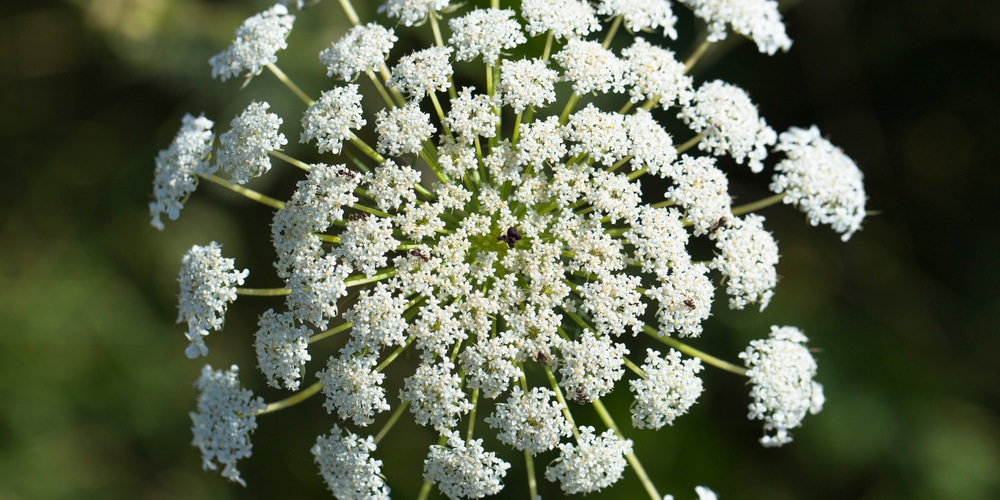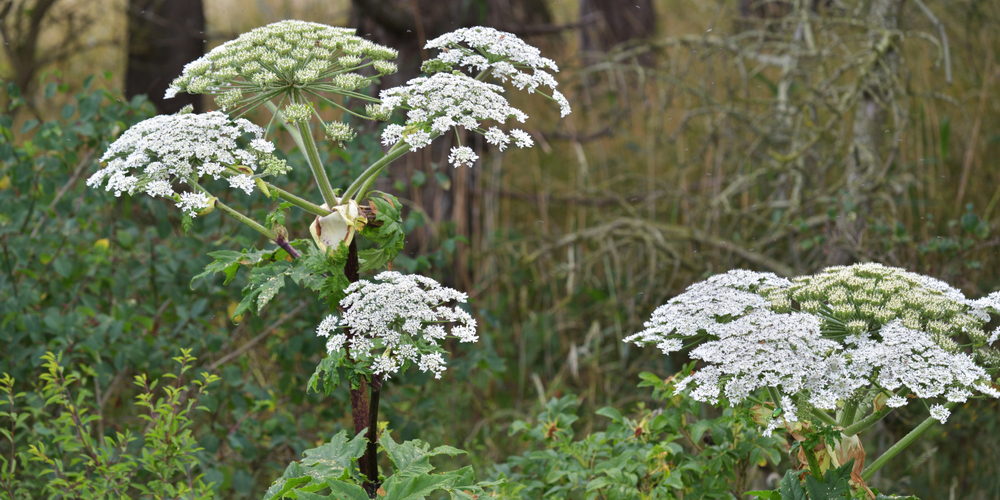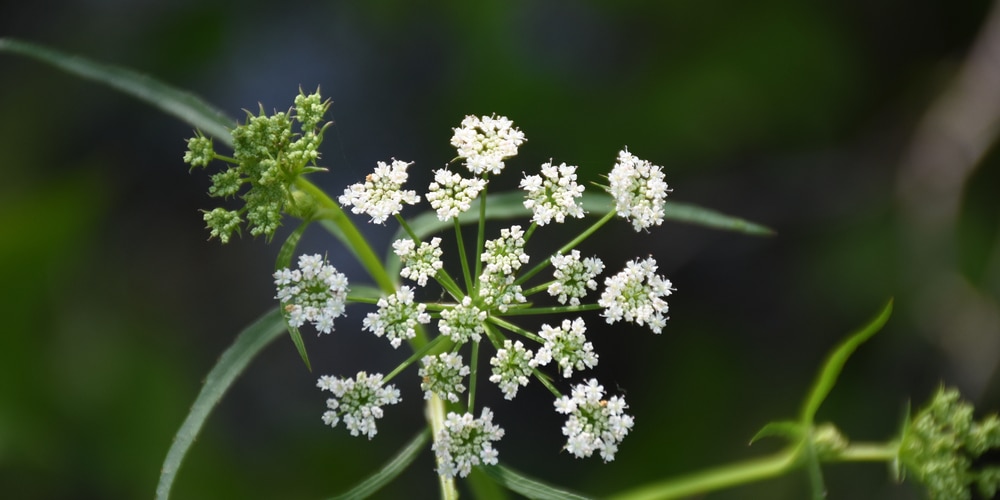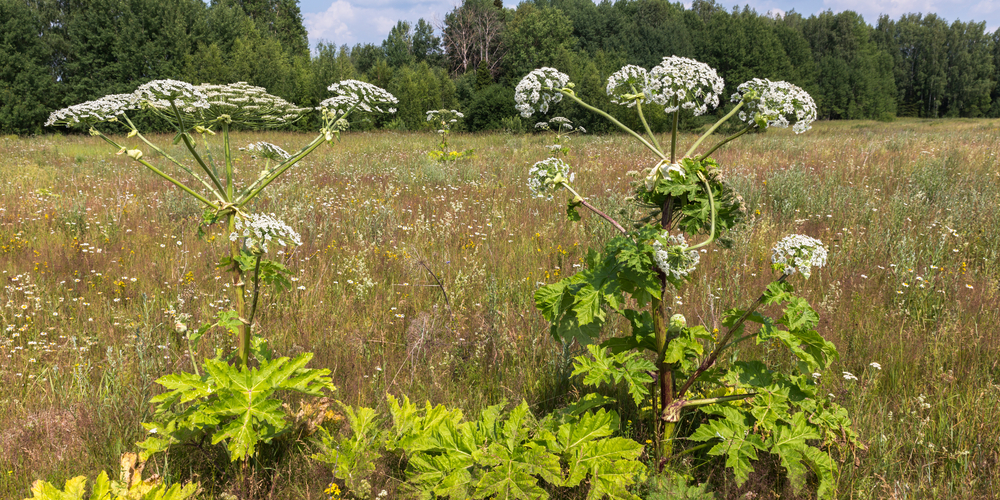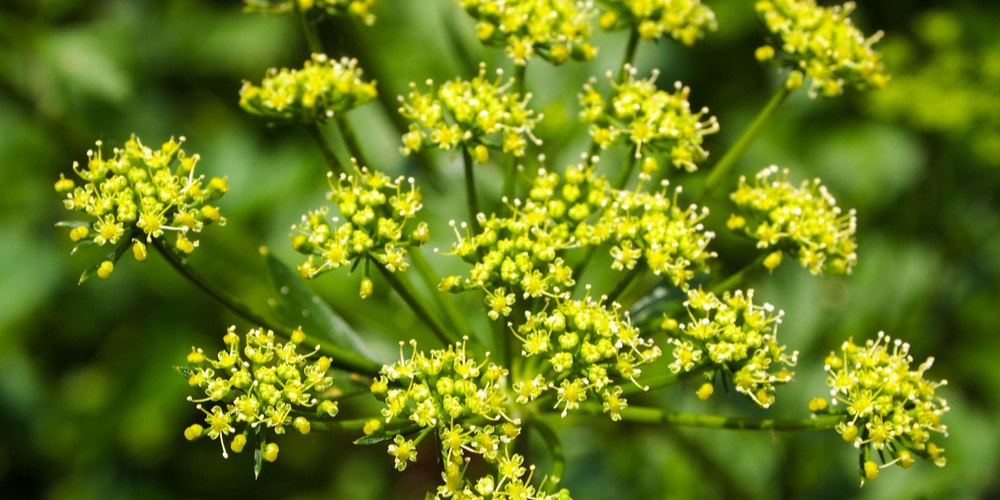If you’re looking for Queen Anne’s lace (Daucus carota), you must be absolutely sure of the identification. Many of its look-alikes can cause unpleasant or even deadly reactions. Queen Anne’s lace, and many plants that look like it, are invasive and grow in similar locations.
Let’s take a closer look at the plants with a similar appearance to Queen Anne’s Lace and how to differentiate them.
About Queen Anne’s Lace
Queen Anne’s lace tends to grow 1-4 feet tall and has branched, fuzzy and grooved stems, and lacy leaves. Its largest white flower cluster (umbel) grows 4-5 inches across, with other umbels being half as large.
Looking closely often reveals a single dark purple or reddish floret in the middle of each umbel. It can also cause skin irritation if you have sensitive skin.
Giant Hogweed
While giant hogweed (Heracleum mategazzianum) is originally from Asia, it has been introduced to North America, where it has become invasive.
When small, hogweed is easy to mistake for Queen Anne’s Lace. However, it can reach six or even 18 feet in height (thus its “giant” status). The thick stems have ridges and purple spots. The stems are also hollow.
However, you don’t want to touch it enough to determine if the stems are hollow, as it can cause severe allergic reactions to the skin and eyes. Contact can cause blistering rashes and permanent scarring, and touching your eyes can even cause blindness.
Poison Hemlock
Poison hemlock (Conium maculatum) originates in Europe, Africa, and Asia. Like hogweed, it has become invasive in North America.
At 3 feet tall, it can be the same height as Queen Anne’s Lace. However, it can grow as tall as 8 feet. Unlike Queen Anne’s lace, poison hemlock stems are hairless. They’re also hollow with purple spots and ridges.
As the name suggests, every part of poison hemlock is poisonous to humans or animals. It can cause immense allergic reactions if you touch it, and eating any amount can cause death.
Spotted Water Hemlock
Spotted water hemlock (Cicuta maculata) is a native North American wetland plant. You’re most likely to encounter it in wet meadows or along stream banks.
The plant tends to grow 3-6 feet tall. Unlike Queen Anne’s, its hollow stems are smooth and hairless. The stems may be:
- Purple
- Green
- Green with purple spots or stripes
Many people call it the most deadly plant in North America. Consuming it can cause nausea, intestinal pain, vomiting, delirium, and convulsions or seizures. Death often follows.
Cow Parsnip
Cow parsnip (Heracleum maximum) is another North American native plant. It’s become an endangered species in Kentucky and a species of concern in Tennessee.
Cow parsnip grows 4-10 feet tall and has fuzzy, grooved stems. However, the flowers look less delicate than Queen Anne’s Lace.
While it doesn’t cause death like many other Queen Anne’s lace look-alikes, cow parsnip can still cause skin irritation, rashes, and discolorization.
Wild Parsnip
Wild parsnip (Pastinaca sativa) first came to North America from Asia and Europe and has proven to be invasive here.
One of the crucial identifiers of wild parsnip is that it has yellow rather than white flowers. It grows 2-5 feet tall and has hairless, grooved stems that differ from Queen Anne’s lace.
Similar to cow parsnip, it’s not deadly, but it can cause skin irritation, blistering rashes, and discoloration.
Yarrow
Yarrow (Achillea millefolium) is a native North American plant.
It’s usually easy to differentiate yarrow from Queen Anne’s lace because of its bright yellow, red, or pinkish flowers. The stems may be hairy, and the plant grows 0.5-3 feet tall.
Yarrow has been used for centuries in traditional medicine. However, it can cause reactions in people who are allergic to plants in the Asteraceae/Compositae family, such as mums, daisies, marigolds, or ragweed. It also contains chemicals that are toxic to dogs, cats, and horses.
Final Thoughts
If you’re looking for Queen Anne’s lace but aren’t 100% sure of the plant’s identification, it’s best to leave it alone. In many cases, even leaning down to look closely at some look-alike plants can result in allergic reactions. Touching or consuming them is even worse since many look-alikes offer painful rashes, skin boils, blindness, or even death. For this reason it may be best to get rid of Queen Anne’s Lace from your yard.
